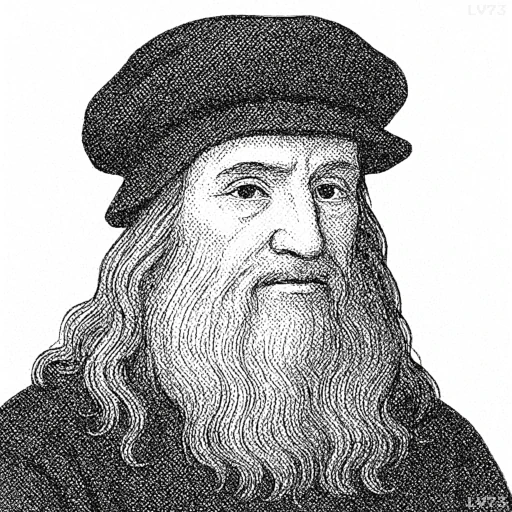“The painter who is familiar with the nature of the sinews, muscles, and tendons, will know very well, in giving movement to a limb, how many and which sinews cause it; and which muscle, by swelling, causes the contraction of that sinew; and which sinews, expanded into the thinnest cartilage, surround and support the said muscle.”

- April 15, 1452 – May 2, 1519
- Italian
- A versatile man (painter, sculptor, architect, inventor, scientist, etc.)
table of contents
Quote
“The painter who is familiar with the nature of the sinews, muscles, and tendons, will know very well, in giving movement to a limb, how many and which sinews cause it; and which muscle, by swelling, causes the contraction of that sinew; and which sinews, expanded into the thinnest cartilage, surround and support the said muscle.”
Explanation
In this quote, Leonardo da Vinci highlights the importance of a deep understanding of human anatomy for creating realistic and dynamic art. He argues that a painter who is familiar with the structure and function of muscles, sinews, and tendons will be able to accurately represent the movement of the human body. By studying the anatomy of the limbs, a painter can understand how the body moves—how muscles contract and expand, and how tendons and sinews interact with these muscles to create specific actions. Da Vinci’s approach emphasizes that true artistry in the human form comes from knowledge, not just observation, and that an understanding of how the body’s inner structures work is essential for accurately depicting its movement.
Historically, this quote reflects Da Vinci’s commitment to both art and science. During the Renaissance, Da Vinci was one of the pioneers in integrating the study of human anatomy with artistic representation. He believed that to depict the human body with precision, an artist had to understand not just the external appearance but also the internal mechanisms—the muscles, tendons, and bones that make movement possible. His meticulous dissections and anatomical drawings helped bridge the gap between art and science, contributing to a deeper understanding of both.
In modern terms, this quote speaks to the ongoing importance of interdisciplinary knowledge in fields like medicine, art, and design. Whether in illustration, animation, or surgical practice, understanding the functionality of muscles and tendons is crucial for creating accurate and effective representations of the human body. Da Vinci’s insight reminds us that the most authentic and lifelike depictions of human movement come not just from observation, but from a scientific understanding of how the body works. This connection between art and science continues to inform practices in biomechanics, physical therapy, and medical illustration today.
Would you like to share your impressions or related stories about this quote in the comments section?
